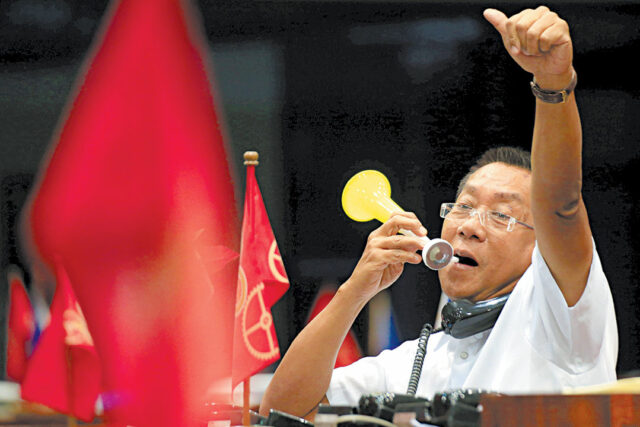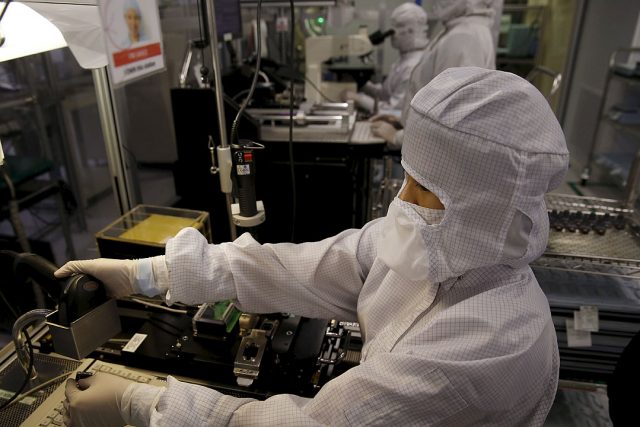Remembering Shaz
BM’s Osias Barroso was married to ballet, and dancers were his children
By Giselle P. Kasilag
THERE was a hush that descended every time Ballet Manila (BM) co-artistic director Osias “Shaz” Barroso Jr. entered the studio. Suddenly, all the dancers were standing straighter. Everyone appeared to be intent on warming up. Those who were caught unprepared were hustling to find their place, hoping he would not notice. But Shaz would see all. With one look, he could tell who was properly warm and stretched, who spent the night studying, and who was out partying.
This wisdom stemmed from decades of dancing, choreographing, and teaching ballet. A career that spanned almost four decades yielded a wealth of experience that he passed on to students that number in the thousands.
He was a formidable danseur, partnering prima ballerina Lisa Macuja Elizalde since the late 1980s. He danced all the principal roles of all the important classical ballets with ease and gained for himself a reputation for his exceptional partnering skills.
“I think that the number one duty of the male classical dancer is to present the ballerina well. I want my ballerinas to look good,” he once said. And present them well, he did. So well, in fact, that it earned him the title the “Ballerina’s Prince.”
Principal dancer Romeo Peralta, Jr. remembered a time when Shaz asked him to act as a spotter when he was preparing to dance Don Jose in Eric V. Cruz’s Carmen. He felt unworthy to critique his mentor, but Shaz was adamant, saying that no one is perfect, and he needed Romeo to check his work and correct his mistakes. It was a valuable lesson to learn from the premier danseur.
It wasn’t only in dancing that his meticulous nature could be observed. Principal dancer Jessica Pearl Dames noted how carefully he planned his company classes.
“Iyun talaga iyung nami-miss namin, iyung class ni Sir Shaz (We really miss the class of Sir Shaz),” said Pearl. “Iyung combinations niya, may dahilan. Talagang hinahanda kami mula class hanggang rehearsal, at sa show (His combinations have logic. He’d prepare us from class to rehearsals, and the show).”
He was extremely strict. With just one look, dancers were known to stop whatever shenanigans they were up to and give him their full attention. His temper was legendary. But everyone knew that it came from a place of love. He wanted everyone to become better. Just like his ballerinas, he wanted all his students to look good.
When the news of Shaz’s passing was announced early last week, members of the ballet community from all over the world began posting their memories of the man they fondly call Teacher Shaz. Indeed, that was the title he cherished the most.
“I remember after this rehearsal I struggled at, you said — ‘Remember, you are not the same dancer you were 2 years ago. You’re stronger and you’ve grown — give yourself credit.’ And now whenever I’m down, I replay that memory of you in my head. Up to now when I dance, I check myself and think, ‘What would teacher Shaz say?’,” wrote Joan Emery Sia, a former Ballet Manila principal dancer now with the Florida Ballet in the United States.
“His passing is a significant personal loss to me, as I have lost not just a mentor and teacher, but also a cherished friend. Both my students and I have benefited greatly from Sir Shaz’s visits to India and from my visits to Ballet Manila in the Philippines. I will forever cherish the wisdom and inspiration he imparted to us, and his legacy will continue to live on in our hearts,” posted Deepika Ravindran on her social media account.
His students from Taiwan, Indonesia, Malaysia, and the United States all paid tribute to their mentor.
At Ballet Manila, the company he built together with Ms. Macuja-Elizalde, a hush has descended once more but due to his absence this time.
Principal dancer Mark Sumaylo said that on the weekend their beloved Sir Shaz passed away, the company was performing in multiple sites: a contingent had shows at Roxas City and Kalibo, another was in Baguio, and a team was in Hong Kong for the Asian Grand Prix competition. It was a weekend of triumph, marking the successful return of BM to live performance. Then a phone call was received. After all the shows were completed, Lisa made a call to inform the dancers of the loss.
In their own ways, the dancers recalled the most important lessons they had learned. For co-artistic associate Gerardo Francisco, Jr., it was the intellectual approach in mastering technique. For principal dancer Shaira Comeros, it was the partnering classes. For principal dancer Joshua Enciso, it was the passion he poured into ballet. For soloist Jessa Balote, it was the discipline he instilled in everyone. He was the ballet parent who shaped their careers and changed their lives.
His sister, Icet Barroso, summed it beautifully: “Ballet ang asawa niya, iyung mga dancers ang mga anak niya (Ballet was his spouse, and the dancers were his children).”
But his lessons applied not only in ballet. I met Shaz for the first time as a newbie reporter for BusinessWorld in 1997. He was playing the lead in David Campos’ Petrushka and I sat with him for an interview.
“Ang bata mo pa (You’re so young)!” he told me. But he answered all my questions in detail with no hint of the condescension or superiority complex that I experienced from other artists dealing with younger reporters.
He told me that he was never the first choice for roles. Sometimes, he wasn’t even the second choice, or a choice at all. But he was always prepared. He learned all the roles he wanted to perform someday, on top of what was assigned to him. So when the first or second choices could not deliver, he was there, ready to step in at a moment’s notice.
He said that it did not matter that he was not the first choice. What was important was that he was the one who performed it on stage. He was the one the audience saw. He was the one people remembered.
It was a beautiful lesson to learn at the beginning of my career in journalism — a time when I was most impressionable. I began a habit of over-preparing, viewing issues from different sides, and presenting my stories in a more elegant fashion. While I could not dance to save my life, I joined the many dancers from all over the world who benefitted from his wisdom.
But despite his passing, Shaz continues to be an inspiration for the company. In a tribute article written about her partner in 2014, Lisa shone the spotlight on her prince saying, “Shaz is the force behind Ballet Manila. People think it’s me. But he is.”
Giselle P. Kasilag co-owns Project Art, Inc., which handles the archives of Ballet Manila. She is also involved with Ballet Manila founder Lisa Macuja-Elizalde’s radio show, Art 2 Art, under the Manila Broadcasting Company. Ms. Kasilag is a former reporter in the Arts & Leisure section of BusinessWorld.
















